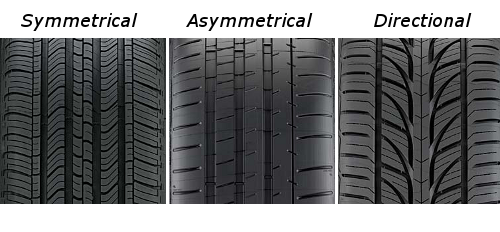(By John Adiele) Tyres are certainly the first line of defence against any form of mishap while on the road. Therefore, it’s safe to say that having fit and good tyres on your car gives you a certain measure of security while on the road.
But then, what makes a car tyre fit and good for the roads? Perhaps, its physical conditions which include good air pressure , clearly visible treads and an overall ideal physical state generally.
Speaking of the tyre treads , do you realise that these tyre treads actually represent something and are not just inscribed for decoration but rather have their specific functions and specifications for different types of cars and road conditions.
There are about four kinds of treads which you see on tyres fitted on vehicles that ply the roads on a daily basis namely , the Symmetrical Treading, Directional Treading and Unidirectional Treading.
Let’s shed more light on these tyre treads and their appropriate road conditions.
Symmetrical Treading
Symmetrical treadings are basically found on tyres designed for non-performance vehicles as this pattern involves a seemingly continuous groove or independent pattern that stretches throughout the surface of the tyre.
Tyres with the symmetrical tread patterns are most ideal for passenger vehicles due to their rather quiet and lasting nature which makes them fit for an everyday car , coupled with their ability to be rotated across different directions.
Asymmetrical Treading
Tyres with asymmetrical treading are ideally found in sports cars. These tyres are specifically built for maximum grip either on wet or dry roads. It features a pattern that sees the inner and middle part of the tyres designed for wet and winter surfaces while the outer part is specifically designed for effective cornering.
Directional (Unidirectional) Treading
Tyres with the unidirectional treading are built for high performance cars or vehicles as the case may be. This pattern entails a v shape in the middle of the tyre coupled with large space of grooves between the tread blocks. This pattern basically improves resistance especially at high speed , which makes it best suited for high performance vehicles.
Directional (Asymmetrical) Treading
Tyres with the asymmetrical treading are a fusion of several combinations, this involves the v pattern attributed to the directional tread and also the dry weather traction. In other words, this sort of tyre could be more ideal in both ways.
Always use a tyre best suited for your kind of vehicle and road condition as the first measure of safety begins with you.
….John Adiele, Guest columnist and blogger could be reached on 08184688283 | 08184688283 | johnadiele15@gmail.com |http://johnyblogscar.com | http://tech4rum.com
 ..:: AUTO REPORT AFRICA ::..
..:: AUTO REPORT AFRICA ::..




